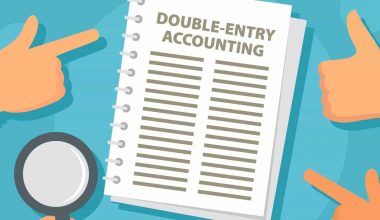Taxes have been in place as far as the period of 3000–2800 BC. It is said to be a governmental organization’s mandatory financial charge or another sort of levy imposed on a taxpayer, whether an individual or a legal entity, in order to fund government spending and related public expenses, whether local, regional, or national. Most countries have a tax system in place to pay for public, shared, or agreed-upon national necessities as well as government functions. Some tax personal annual income with a flat percentage rate, while most scale taxes are progressive and based on annual income bands. The economic wise tax also helps in building the economy of a country. In this article, we are going to learn what a progressive tax is and what examples of taxes are progressive.
Progressive Tax Meaning
It can be defined as one in which the rate rises in proportion to the increase in the taxable amount. It can also be related to how tax rates rise from low to high, resulting in a taxpayer’s average tax rate being lower than their marginal tax rate.
Lower-income people are relieved of the burden of paying for items that a society needs to function, such as roads, schools, and other government services, thanks to progressive taxes. This serves to mitigate the effects of income inequality by ensuring that those who earn more put more back into the system, while those who earn less keep a larger percentage of their earnings while still using the same services.
Furthermore, the word is typically used in the context of personal income taxes in which people with less income pay a lower tax percentage than those with higher income.
A progressive tax system could also refer to one in which the taxing authorities impose a higher tax as the taxpayer’s income rises. When higher taxes are collected from those who earn more and lower taxes from those who earn less, the government is said to use a progressive system of taxation. Under progressive taxes, it is expected that people who earn more should pay more. The income tax is broken down into different slabs, and a taxpayer is subject to a new and higher rate of taxation when his income exceeds a specific level. We will see some of the advantages and disadvantages of a progressive tax.
Advantages of a Progressive Tax
- High revenue
- Support for the poor
- Reducing the burden on the poor
- Reduce inequality
- Lower economic inequality
#1. High Revenue
The government may be able to generate revenue by raising taxes on the wealthy, albeit this may be contingent on how they react, such as shifting income to an offshore account. Nevertheless, up to a point, this may bring in more revenue, especially if the rate is still competitive with other countries.
#2. Support for the Poor
A more progressive tax structure can generate more income, which is required to offer social security benefits. It contributes to the necessary funds to fund housing aid, unemployment benefits, disability benefits, and low-income income support
#3. Reducing the Burden on the Poor
A progressive tax ensures that individuals at the top of the income scale pay a higher proportion than those at the bottom. This permits the government to lower taxes for the poor while recouping revenue from the wealthy.
#4. Reduce Inequality
Underfunding public services is one of the most serious challenges in terms of inequality. The belief is that underfunding services like public education creates a poverty trap in which people are unable to get the skills they need to advance up the wage ladder.
Furthermore, by raising taxes on higher-income households, they are able to support public programs that benefit the poor and assist them in rising out of poverty. At the same time, it narrows the difference between rich and poor discretionary income.
#5. Lower Economic Inequality
A progressive tax can help low-income households raise their disposable income while diminishing the disposable income of high-income households. This permits the poor to purchase more products while limiting the quantity that the wealthy may purchase.
The Disadvantages of a Progressive Tax
- Poorly defined
- Disincentives to wealth creation
- High admin costs
- Government revenue is lower.
- Capital flight
#1. Poorly Defined
Let’s take, for instance, a tax that is 30% for those earning less than $40,000 a year and 44% for those earning more than $700,000. It is still an example of a progressive tax because those earning more pay a higher rate. The progressive rate, on the other hand, is relatively low. While it is classified as a progressive tax, many argue that it is not. And this is the problem. It is unclear in the sense that everyone has a different idea of what really progressive taxation is.
#2. Disincentives to Wealth Creation
Taxing the rich excessively more than those with lower incomes creates a disincentive. Why would someone want to work 100-hour weeks if the government takes away 80% of their pay? As a result, there is a perverse incentive to work less and hence produce less economic production. At the same time, it has the potential to stifle entrepreneurship.
This, however, can result in a high number of brackets. For example, you may have 20 tax brackets, each with a different tax rate. This might rise from 25% to 30%, then to 40%, 50%, and finally to 70% in 5% increments. Although this would be a progressive system, it would be incredibly difficult to implement. At the same time, it would cost the IRS millions of dollars to run, and it would be a hassle for individuals who file their taxes themselves.
#3. Lower Government Revenue
Depending on how progressive the tax system is, it may result in lower levels of revenue for the government. People will be willing to work hard and advance to higher tax tiers, for instance. What’s the point of working 100-hour weeks if you’re paid the same after taxes as someone who works 50? Simultaneously, the tax rate may encourage high-earning people to relocate their income elsewhere and avoid paying any taxes. The government, on the other hand, receives nothing as a result of this.
#4. Capital Flight
Individuals may move their money overseas and invest in other countries as a result of progressive taxation, notably on income and capital. If the tax rate is very progressive, say from 10% to 80%, the wealthy may find it advantageous to relocate. In reality, the top rate for the richest earnings will determine the outcome.
Progressive Tax Income
A progressive tax system applies increasing tax rates to higher income levels. Individual income tax rates in the United States range from 10% to 37%. As a result of this design, higher-income people pay a larger share of income taxes than lower-income people.
Regardless, because they progress at a faster rate, high-income workers pay more than low-income earners. As an individual’s wealth grows, so does his or her tax rate, as well as his or her tax burden. Overall, higher-income Higher-income earners pay a higher percentage of their income in taxes and pay more money in taxes than lower-income earners.
Examples Of Progressive Tax
Progressive taxes grow and decrease in response to the taxpayer’s taxable income rising and falling. As a result, high-income earners will have to pay a higher tax than low-income earners. This is accomplished by determining a tax bracket for each taxpayer’s income and allocating tax rates to each bracket.
The progressive tax system is founded on the concept that a flat or uniform tax rate for all taxpayers, regardless of their income, is not a fair plan because it would disproportionately affect low-income earners. The United States tax system and also the Swedish tax system are examples of a progressive tax.
Let us consider the following examples of a tax that is progressive.
Example 1
Consider the following tax rate table, where the first two columns must be utilized to calculate taxes according to the progressive tax system. The computed tax figure is then shown in the third column, which is generated by applying a progressive tax rate on income. We may easily note that the tax rate rises with it when income rises.
| 1 | Income | The Progressive Tax Rate | Tax Amount in $ |
| 2 | 25,000 | 10% | 2,500.00 |
| 3 | 35,000 | 15% | 5,250.00 |
| 4 | 50,000 | 20% | 10,000.00 |
| 5 | 70,000 | 25% | 17,500.00 |
| 6 | 140,000 | 30% | 42,000.00 |
Therefore, as a result, everyone earning up to $25,000 will pay 10% tax, while anyone earning more than that will pay the combined rates.
Let us take another example.
Example 2
Let’s look at another example using the same tax rate table. This time, Peter, a taxpayer with a taxable income of $50,000 a year, wants to determine his tax liability for the year.
| Peters’ Taxable Income | 50,000 | Rate Applied |
| 20,000.00 | 2,000 | 10% |
| 35,000.00 | 5,250 | 15% |
| Total Tax Liability | 7,250 |
The first $20,000 of Peter’s income will be taxed at a rate of 10%, and the remaining $35,000 will be taxed at a rate of 15%. Therefore, for the sake of simplicity, we’re not taking into account any above-the-line or standard deduction amounts. The ultimate adjusted taxable income is assumed to be $50,000. The total tax bill comes to $7,250. The above illustrations are very good examples of a progressive tax.
After looking at the examples of progressive tax above, we can understand how the system works. We may see that the amount of tax owed increases as an individual’s income rises. As you can also see from the examples of progressive tax above, a person with a taxable income of $50,000 per year pays $7,250 in tax.
What Is the Purpose of a Progressive Tax?
Progressive taxes are in place to prevent those with lower incomes from bearing an unfairly disproportionate share of the cost of maintaining public infrastructure, services, and oversight. People who make less money pay less in taxes under a progressive tax system. Higher-income earners pay higher taxes. A progressive tax also raises the amount of tax revenue collected because the highest earners are taxed more heavily and on higher incomes.
Do I Pay the Same Percentage of Tax on All My Income?
No. When you have a progressive tax, you only pay the highest percentage on the amount of your income that is above the cutoff. For instance, if a single individual earns $100,000 in 2022, they are taxed at a rate of 24%. (as well as lower brackets). However, they are only subject to tax at that rate on the percentage of their income that exceeds the bracket’s minimal amount of $89,075 in that year. As a result, the first $10,275 in income is taxed at 10%, followed by 12% up to $41,775, and 22% up to $89,075. Only $10,925 ($100,000 – $89,075) would be subject to 24% tax in this case.
How Often Do the Tax Brackets Change?
Congress determines tax rates, and the Internal Revenue Service administers them (IRS). Legislation, such as the Tax Cuts and Jobs Act of 2017, which preserved seven brackets but reduced the rates that applied to nearly every one of them, is normally how changes are made.
What Is the Purpose of a Progressive Tax
Progressive taxes are in place to prevent those with lower incomes from bearing an unfairly disproportionate share of the cost of maintaining public infrastructure, services, and oversight. People who make less money pay less in taxes under a progressive tax system. Higher-income earners pay higher taxes. A progressive tax also raises the amount of tax revenue collected because the highest earners are taxed more heavily and on higher incomes.
Conclusion
The progressive tax system is designed to avoid placing an undue burden on the poor and low-income population, allowing them to spend their money on necessities and contribute to the economy. Many countries now have progressive tax systems in place. It is advantageous because it raises more revenue than a flat or regressive tax system.
Progressive Tax FAQs
What is a progressive tax?
A progressive tax can be defined as a tax system whereby the taxing authorities impose a higher tax as the taxpayer’s income rises. It can also be defined as a system in which an individual’s tax rate rises in direct proportion to their income.
What are the advantage and disadvantages of progressive tax?
A progressive tax system reduces the tax burden on the people who can least afford to pay. Whereas a progressive tax acts as a disincentive for getting a job that pays a higher wage.






